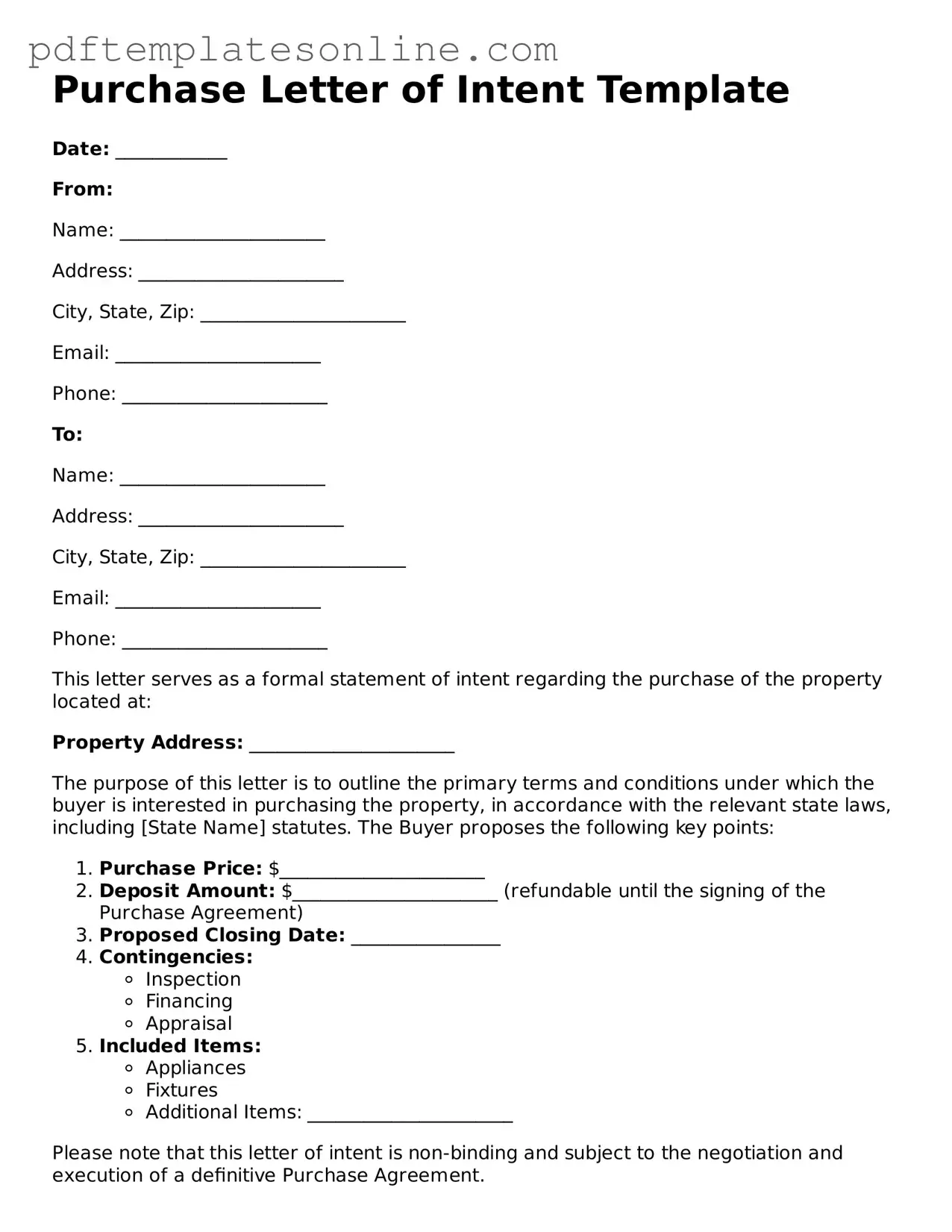Filling out a Purchase Letter of Intent (LOI) can be a straightforward process, but there are common mistakes that individuals often make. These errors can lead to misunderstandings or even jeopardize a potential deal. Awareness of these pitfalls can help ensure that the LOI serves its intended purpose effectively.
One frequent mistake is failing to include essential details. Important information such as the purchase price, property description, and the parties involved should be clearly stated. Omitting these details can create confusion and lead to disputes down the line.
Another common error is using vague language. Precision is crucial in legal documents. If terms are not clearly defined, it may result in differing interpretations. This ambiguity can complicate negotiations and lead to potential conflicts.
People often overlook the importance of specifying contingencies. Contingencies are conditions that must be met for the agreement to be binding. Without them, one party may find themselves obligated to proceed with a purchase that is not in their best interest.
Additionally, neglecting to outline timelines can be detrimental. A Purchase LOI should include deadlines for various stages of the transaction. This helps keep all parties accountable and ensures that the process moves forward in a timely manner.
Another mistake involves not consulting with a legal professional. While it may seem cost-effective to fill out the LOI independently, the guidance of an expert can help avoid costly errors. Legal advice can provide clarity and ensure that the document meets all necessary requirements.
Some individuals also fail to review the document thoroughly before submission. Rushing through the process can lead to overlooked errors or missing information. Taking the time to review the LOI can prevent misunderstandings and protect all parties involved.
People sometimes make the mistake of not considering the implications of the LOI. An LOI can create a binding agreement depending on its language. Understanding the legal ramifications of the document is essential to avoid unintended commitments.
Another error is failing to communicate with all parties involved. Keeping all stakeholders informed and engaged throughout the process is vital. This ensures that everyone is on the same page and can contribute to a smoother transaction.
Lastly, not following up after submission can lead to delays. After submitting the LOI, it is important to check in with the other party to confirm receipt and discuss any questions or concerns. This proactive approach can help maintain momentum in the negotiation process.
